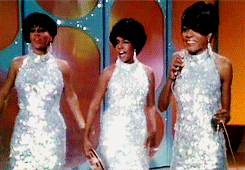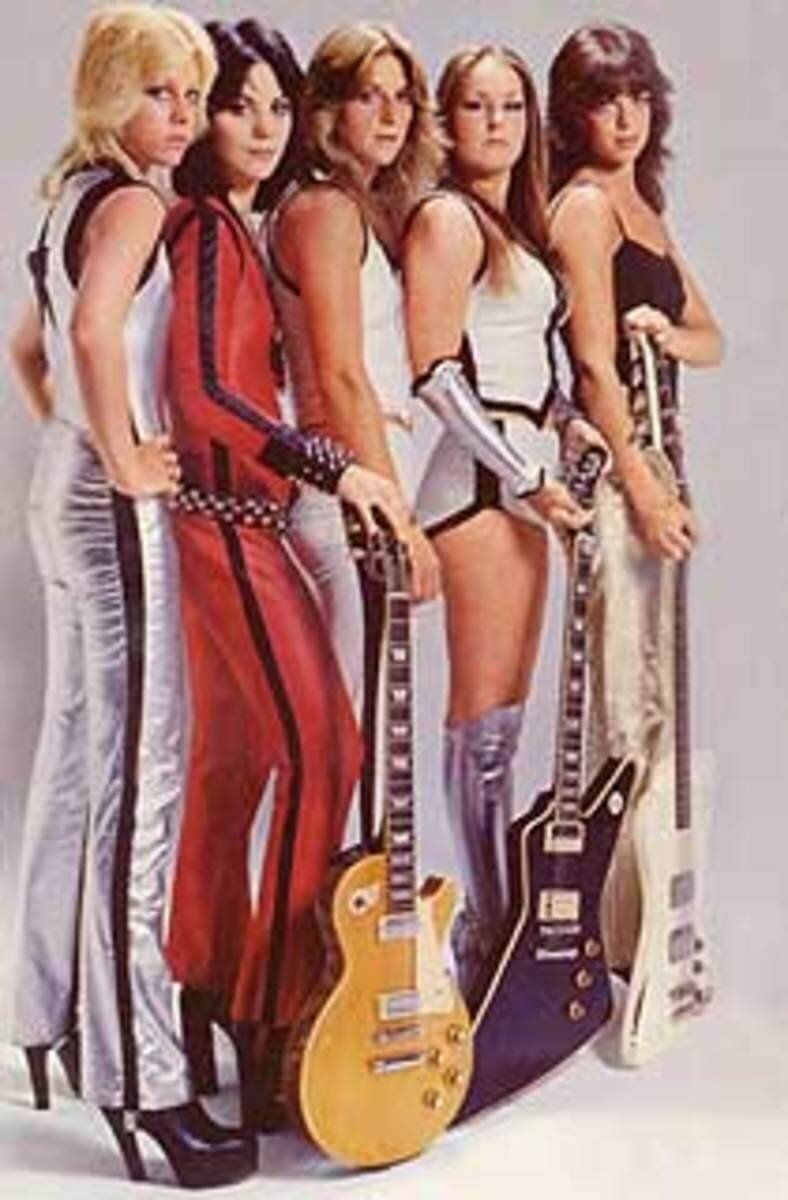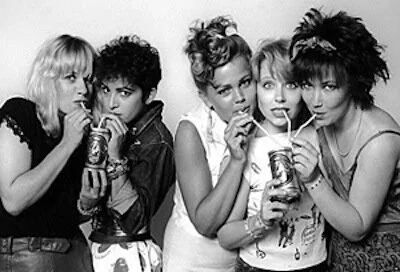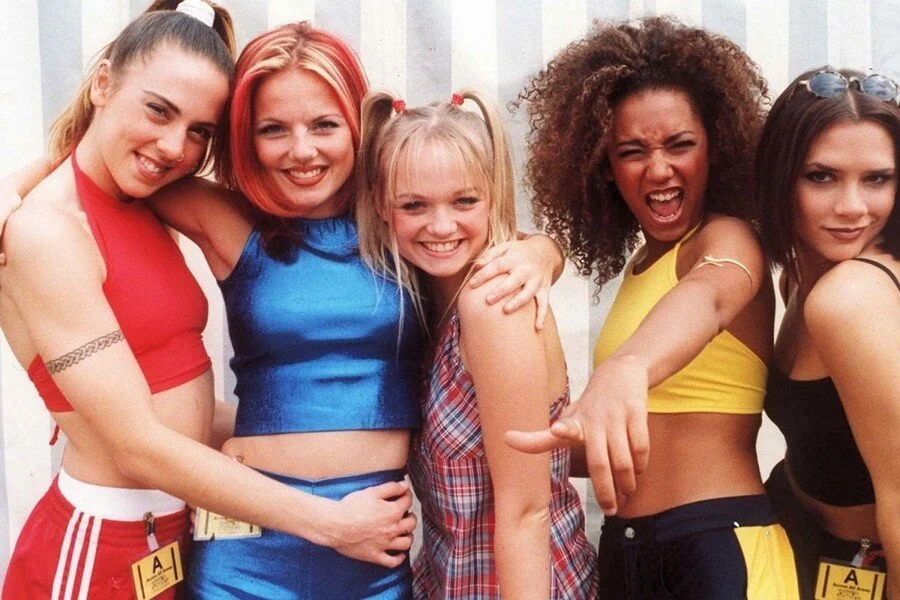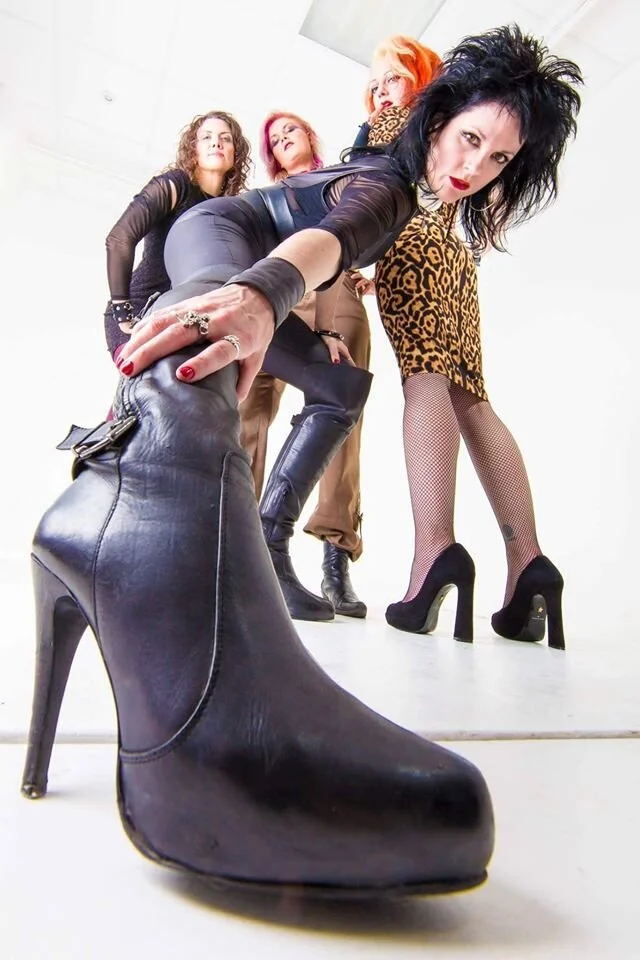By The Landlord
“Girls see these defined roles they're supposed to follow in life, but when I was a young child, my parents told me I could be anything.” – Joan Jett
“You can't just sit there and wait for people to give you that golden dream. You've got to get out there and make it happen for yourself.” – Diana Ross
“I joined an all-girl band in Detroit and, although I was a pianist and drummer, I was asked to play bass because no one else wanted to. When I strapped it on, it fit me as good as my leathers. At the first gig we played, I looked out at the audience and thought, 'This is what I'm going to be doing for the rest of my life.’” – Suzi Quatro
“In the 1970s, girls didn't do anything. It wasn't their fault. For me and the other working-class girls I hung around with, our route was plotted - you were a secretary and a wife. I wanted to hitchhike around the world, go on motorbikes, be in bands.” – Viv Albertine
Why are girl groups, or all-female bands given that term? It’s not as if you have to, for example, label the Beatles or the Stones as all-male bands. The answer of course is in the historic and innate male bias within the music industry, as much as any other, and because, in the great scheme of things they have been in a great minority, denied access and control. But this week, while unable to avoid such terms, we’re doing our bit to redress the great imbalance, and celebrate female artists who have grouped together, to create their own defining sound, to strike out for themselves and their sex, and create landmarks that give women a timelessly independent place in musical history.
The parameters of the topic may be broad, but they are also specific. The artists can’t be solo or duets with a backing band, or dominated by women but with male members in the group. They have to be all women, and must be at least three in number. They can hail perhaps from earlier in the 20th century, or from the movement of popular girl singing groups, a genre that began in earnest in the 1950s, and reached its height in the 60s and 70s, before a different revival in the 1990s, or a band where all the performers, including those playing instruments, are female. Ideally they have also written their own material, but of course in earlier eras that was less common a trend.
And more specifically, while there are hundreds of iconic songs by all-female groups, ideally let’s try to pick out examples that show off the female group dynamic at its best. They styles, strengths, personalities, a sense of emancipation, expression, charisma, sexiness, sensuality, craziness, kookiness or calmness that sets them apart from the blokes.
What happens when women group together to make music? Is there a difference to how men do it? Are there just as many tensions, fights and feuds, or more harmonious behaviour and collaboration? Just as men are affected by others around them, do women in a band also change, become more, as it were, conventionally feminine or ‘girly’, or more male-style aggressive? Is a female get together more likely to go into cooing baby shower mode or turn into a ladette shouty fighting gang? Of course the answer is either, and many in betweens. And within the group, does the dynamic change, when some women take on what might be perceived as male roles? All of these issues can come into play this week, and songs that show up such qualities will be particularly welcome.
Thanks to the suffragettes and other heroines, women started striking out on their own in formal musical groups in the early part of the 20th century. A leading classical example was The Woman’s Symphony Orchestra of Chicago, a leading American orchestra that flourished in concert halls and summer stages in their own city and on major tours, also doing regular radio broadcasts from 1925 to about 1948.
One of the first all-female groups was the Hamilton Sisters and Fordyce, an American trio who successfully toured England and parts of Europe in 1927 and later changed their name to the Three X Sisters, as pioneers of the close harmony style. Close harmony is a topic we’ve explored before, but that doesn’t stop us revisiting them in the female group context. The Boswell Sisters ran in parallel to them from 1930 to 1936 with more than 20 hits, and were the inspiration for the even bigger Andrews Sisters, who started out as a Boswell tribute band.
The fabulous Andrews Sisters, originally a Boswell Sisters tribute act
But it was really from 1955 that the golden age of the girl group blossomed with groups such as the Chordettes, the Fontane Sisters, the Lennon Sisters, the McGuire Sisters, the DeCastro Sisters, and the Bonnie Sisters. Then came the Chantels, with 1958’s Maybe, arguably, and just maybe to first true girl group sound. Then the Shirelles, with Tonight’s The Night, and Will You Still Love Me Tomorrow (co-written by Carole King), and the rest is a history, or indeed her story, form Martha and the Vandellas to the Supremes and beyond.
Without going into a book-sized account, here are just a few examples through styles and eras as inspiration.
The fabulous Supremes in green
The fabulous Ronettes - huge inspiration to Amy Winehouse
The fabulous Pleasure Seekers, an early band for Suzi Quatro
The fabulous Runaways (with Joan Jett)
The fabulous Go-Go’s, with Belinda Carlisle
The fabulous Bangles, with big hair
The Spice Girls, with big advertising deals
Here in the bar, alongside the big four who have already spoken other female guests have dropped by to grace us with their insights on the female group subject. Lesley Gore, who was a solo star, and something of a feminist icon, gives some perspective on that so-called girl group era: "Given that there was that era of girl group music and it's still very popular, but I think if you looked at the chart from that time you would see many more men on it. Because the industry, they were catering to young girls. I mean, that's what they thought their audience was.”
So while the 1960s was a decade of great girl groups, their output was still controlled by men. So did girl groups only really come into force when women picked up instruments and wrote their own songs? Joan Jett joined the Runaways, but it was still heavily controlled by male management. Certainly though, rock and then especially punk gave women a new voice, and power, cutting through the bullshit. Bjork agrees, and reveals that she “started an all-girl punk band when I was 14, and I was the drummer, not the singer,” but it allowed her skills to develop.
One of the most potent and commercially successful sub-genres of girl groups is K-pop, and South Korean band Girls’ Generation (also known as 소녀시대) SNSD member Seohyun is here to tell us that she’s proud that Korean girl groups are being recognised in Japan and beyond”.
The fabulous South Korea’s GIrls’ Generation, or SNSD, with handy name labels
But there are also many other recent or lesser known current bands that span different genres, from the former hilarious and sassy punk band, Tits of Death.
The fabulously named Tits of Death, sadly no longer alive as a band
To less conventionally, Ye Nuns, made up of a number more famous indie band members, who cover the output of that iconic 60s garage rock outfit, The Monks.
The fabulous Ye Nuns
Another reason why this topic is, we’d hope, very worthwhile is because the female group dynamic is outrageously rare in the film industry. While there are thousands of all-male films, there are no more than a couple of dozen female-only movies. Here are two of the best known.
The Women (1939) starring Joan Crawford, Norma Shearer and Rosalind Russell may, in the traditions of the play upon which is based, be entirely made of a cast of women, but as the kicker title suggest, it's all about men, and fuelled by that, is a tale of bitchy gossip about relationships.
Meanwhile 8 Femmes is a 2002 all-star French dark comedy musical film (including Catherine Deneuve, Isabelle Huppert, Emmanuelle Béart), set in the 1950s when a group of women gather together for Christmas in a big house, only to find the patriarch figure in the house has been stabbed in the back. But whodunnit? But again it's all about their motives connected to men.
But through music, women continue to fight through the flack. We began with mention of an orchestra, and so end, one most interesting examples of all-female groups is the current all-female Afghanistan orchestra Zohra, changing stereotypes about the country's culture and profile and touring the world.
So then, getting a grip on your girl group nominations and a feeling for all-female band brilliance, I’m delighted to welcome to the Bar another debut guru, the amazing outoftheblue! Place your nominations in comments below for deadline Monday 11pm UK time, for playlists published on Wednesday. Go girls, go boys!
New to comment? It is quick and easy. You just need to login to Disqus once. All is explained in About/FAQs ...
Fancy a turn behind the pumps at The Song Bar? Care to choose a playlist from songs nominated and write something about it? Then feel free to contact The Song Bar here, or try the usual email address. Also please follow us social media: Song Bar Twitter, Song Bar Facebook. Song Bar YouTube. Subscribe, follow and share.

